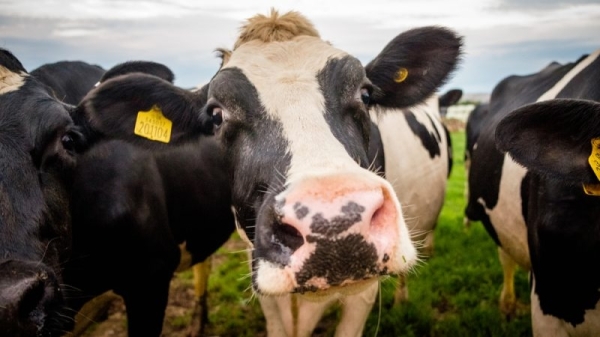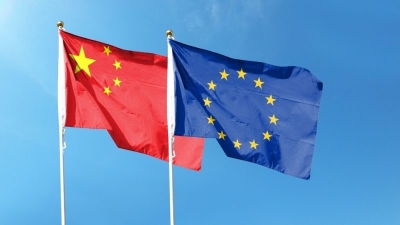What’s the beef? Vote on industrial farming emissions splits EU Parliament

The European Parliament’s environment committee has adopted its position on EU rules to slash industrial emissions, including from the largest farms, which is in direct contrast to that of their agricultural counterparts, who may now table their own amendments for the final vote.
The proposed overhaul of the Industrial Emissions Directive (IED), unveiled by the EU executive in April 2022, aims to reduce harmful emissions coming from industrial installations, whose scope is being expanded to include some of the largest livestock farms in the EU.
With the vote, held on Wednesday (24 May), environment MEPs backed the Commission’s proposal to extend the IED to include larger-scale cattle farming, as well as more pig and poultry farms.
Concretely, the proposed amendments would see pig farms and poultry farms with more than 200 ‘livestock units’ (LSUs) and cattle farms with 300 LSU or more fall under the directive – twice that of the Commission’s original 150 LSU proposal.
Both figures are thresholds at which fams will be defined as ‘industrial’ and therefore penalised under the directive (see below for details).
However, it does include, for the first time, a reciprocity clause in an effort to ensure imports from producers outside the EU meet requirements similar to EU rules.
For the file’s rapporteur, centre-right MEP Radan Kanev, the report shows pragmatism.
“If we want the Green Deal to work in practice, we must turn it into an opportunity for citizens and industry,” he said, adding that it is also “crucial” we do not put unnecessary bureaucratic burden on farmers.
When the MEPs vote on their final mandate in plenary, expectedly in the summer, they will be ready to negotiate with the other lawmaker, the EU Council, which already agreed on its set of amendments in March.
On that occasion, EU ministers proposed to increase the threshold for industrial livestock farming to 350 LSU for pigs and cattle and to 280 LSU for poultry, as well as a stepwise approach for mixed farms.

Agri stakeholders slam minister’s agreement on EU plans to slash emissions
After months of back and forth, EU ministers finally settled on their negotiating position on a proposal to see the EU’s industrial emissions slashed, but their final agreement has not gone down well with farming stakeholders.
Mixed reception
However, the outcome was met with a mixed reception, with environmental stakeholders celebrating the inclusion of cattle in the opinion and others pointing out that the committee lacked ambition in other respects.
“For the first time, the ENVI Committee has substantially weakened a European Commission proposal in all relevant points,” commented the centre-right EPP’s environmental policy spokesperson Peter Liese, calling this a “turning point” for the ENVI Committee.
Likewise, campaign groups praised the inclusion of cattle farming and the new thresholds for pig and poultry farming but lamented that it did not uphold the ambition of the Commission’s original LSU proposal.
“It is crystal clear that unless we make the industrial agriculture sector accountable, there is no going back and our civilisation as we know it is at risk,” Olga Kikou, head of compassion in world farming EU, said.
She also pointed out that animal farms in the EU are responsible for 53% of all methane emissions and the ‘vast majority’ of ammonia emissions.
Parliament ‘split’
However, the opinion from the Parliament’s environment committee directly contradicts that of its agricultural counterparts who, as an associated committee on the file, have shared competence on all parts that touch the livestock sector.
Agriculture MEPs approved their own opinion back in April, calling for cattle to be exempted entirely from the scope of the plans.
This is something rapporteur Kanev acknowledged in the report, where he noted that despite the ‘strong position and arguments’ against the extension of the scope in the AGRI opinions, he chose to “take into account the relevant data on pollution caused by animal-rearing activities” in the report.
He voiced hope that a combination of the fact that only “extensive, organic and family farming under [a] certain scope” and increasing the general threshold from 150 to 300 LSU, where no exemption is applicable, will help win the hearts of their agricultural counterparts.
However, the move failed to appease the EU farmers’ association COPA-COGECA, which criticised the environment committee for showing “no considerations to the EU’s farming realities”.
“Now that we are approaching plenary with a divided house, the upcoming vote is very simple for the EU farming community: will the European Parliament turn its back on European livestock farming as the Commission has?” the association queried.
Contacted by EURACTIV, a European Parliament official explained that, as per the Parliament’s rules of procedures, the committee sharing the competence can table their amendments directly at the plenary if the lead committee does not take their views into account in the main draft report.
“That is probably what AGRI will do,” the official said, adding that this depends on a decision of the committee’s coordinators in June.

Agriculture MEPs ask to exclude cows from emission cutting plans
Cattle should be exempt from the EU’s plans to cut emissions, according to lawmakers in the European Parliament’s agriculture committee (AGRI), who have also voted to raise the threshold of poultry and pigs impacted by the plans.
Read more with EURACTIV




